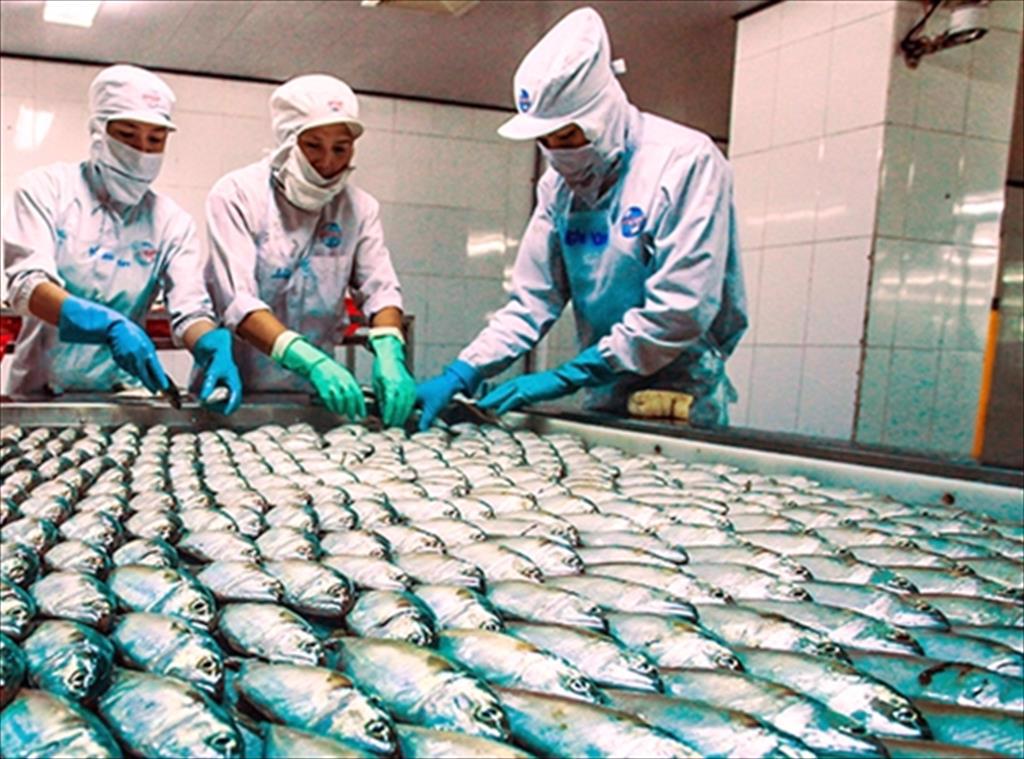Despite facing difficulties due to the COVID-19 pandemic, seafood exports last year were estimated at US$8.58 billion, the same as in 2019. The Vietnam Association of Seafood Exporters and Producers (VASEp) expects them to increase by 5 per cent to $8.8 billion this year aided by many positive factors.

According to Mr. Truong Dinh Hoe, its General Secretary of VASEP, the seafood industry has set a growth target of 5 per cent in exports this year or US$8.8 billion. And there are factors that give us confidence.
Demand for seafood products globally is tending to increase though only at a moderate 1-3 per cent.
We have an advantage of having a reliable raw material source since aquaculture supplies 70 per cent of what is needed to produce commercial seafood products.
Việt Nam has controlled the COVID-19 pandemic well, and so seafood processing plants have been operating normally. While other major seafood exporters in other countries are struggling with lockdowns to control the spread of COVID-19 and mobilising workers, leading to a reduction in supply.
With a reduction in supply from other countries, importers will seek alternative sources from Việt Nam.
Free trade agreements such as the Regional Comprehensive Economic Partnership, the EU-Việt Nam FTA and the UK-Việt Nam FTA promise bright prospects for seafood exports to those markets.
At the sixth General Congress of VASEP's members in December 2020, we set a target of increasing exports of seafood products in general by 10 per cent this year, but in the case of shrimp, we aim for higher growth of 15 per cent based on the export situation last year. If the shrimp get the lower growth, we expect the total seafood exports to record growth rate of 5% to reach 8.8 billion USD
Thanks to better control of the pandemic, Việt Nam has advantages over other large shrimp exporting countries such as Thailand and India, with the two countries seeing a drop in shrimp output.
COVID-19 has changed consumption habits globally, with people eating at home more frequently and tending to eat more seafood products, especially shrimp, at home. The trend is expected to continue for the next few years.
To further increase exports, the sector must find ways to reduce production costs to make its products more competitive so that consumers will use them regularly.
In 2021 the sector will focus on three basic programmes:
The first is how to make shrimp farming more stable by diversifying farming methods and enhancing value chain management.
Shrimp breeding must be further improved to ensure environmental protection and traceability to meet a market trend where every market requires certification of origin.
Meanwhile, shrimp processors and producers need to enhance connection to ensure stable supplies.
Secondly, exporters must identify consumption trends in each market and requirements in terms of quality, certificates and social responsibility norms to come up with appropriate plans to boost exports.
Thirdly, businesses must identify that the fight against COVID-19 will continue to be an important task in 2021, because if just one employee is infected, the whole company will be locked down.
Businesses have capitalised well on FTAs to boost exports.
Exports to the EU have increased significantly since the EU-Việt Nam FTA came into effect last August, thanks to the reduction in tariffs.
They also understand which FTAs carry lowest tariff duties on their products in case that market and Việt Nam are in more than one FTA [Việt Nam and Japan are in ASEAN-Japan, Japan-VN and RECEP].
The important thing now is that competent authorities need to improve procedures for issuing certification of origin for export items and conduct regular checks of their origins to prevent fraud and ensure fair competition for all.
The UK-Việt Nam FTA is an important continuation of trade facilitation between the two countries after the EU-Việt Nam Free Trade Agreement expires for the UK.
The UK is among the large seafood importing countries in the EU. Việt Nam’s seafood exports to the UK used to account for one third of its total seafood exports to the bloc of 28 countries.
So if there is no bilateral free trade agreement with the UK, exports to the market will face difficulties.
The UK has high demand for seafood products, offering businesses the opportunity to boost exports.
Mr. Hoe said, VASEP is focusing on many programmes for creating a solid foundation for the industry’s sustainable development in the long run.
"Firstly, we are building an export strategy for the Chinese market, a lucrative market for seafood products.
It is time for us to change our mindset about this market. It is not an easy market but a large one and has high requirements in terms of quality. So we need to conduct careful research to come up with a strategy to consistently export to the market.
Secondly, we will continue to promote Vietnamese seafood in the global market. This year perhaps we will stop at focusing on developing programmes to promote Vietnamese seafood but on a large scale and in terms of each specific product and market.
Thirdly, we will work with relevant State agencies to get rid of the European Commission’s ‘yellow card’ warning for illegal, unreported and unregulated (IUU) fishing in Việt Nam this year to support the enforcement of the EVFTA better."
The association is urging the Directorate of Fisheries and the Ministry of Agriculture and Rural Development to promote consumption of seafood in the domestic market.
The domestic market of nearly 100 million people is seen as having huge potential to come to the rescue of businesses in case export markets are volatile and help stabilise production, thereby lowering production costs.
In general, the seafood industry still has bright prospects and we are working to ensure it continues to thrive in a sustainable manner.
Source: VNS